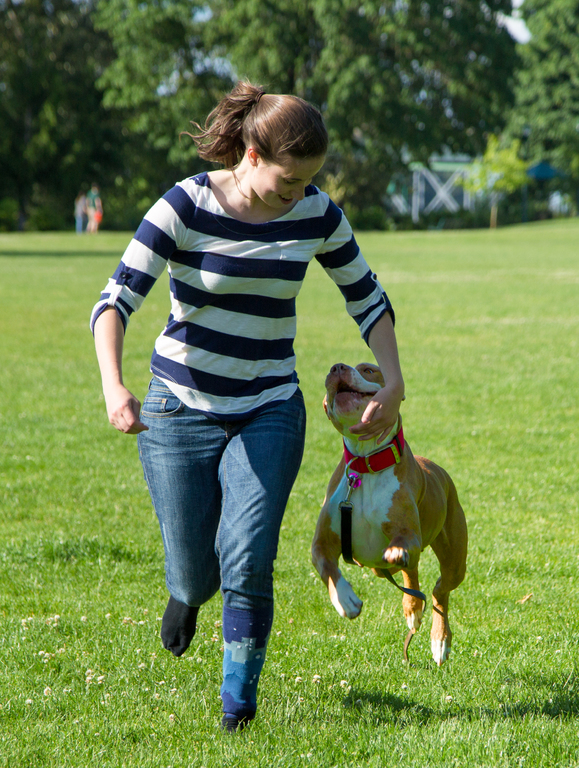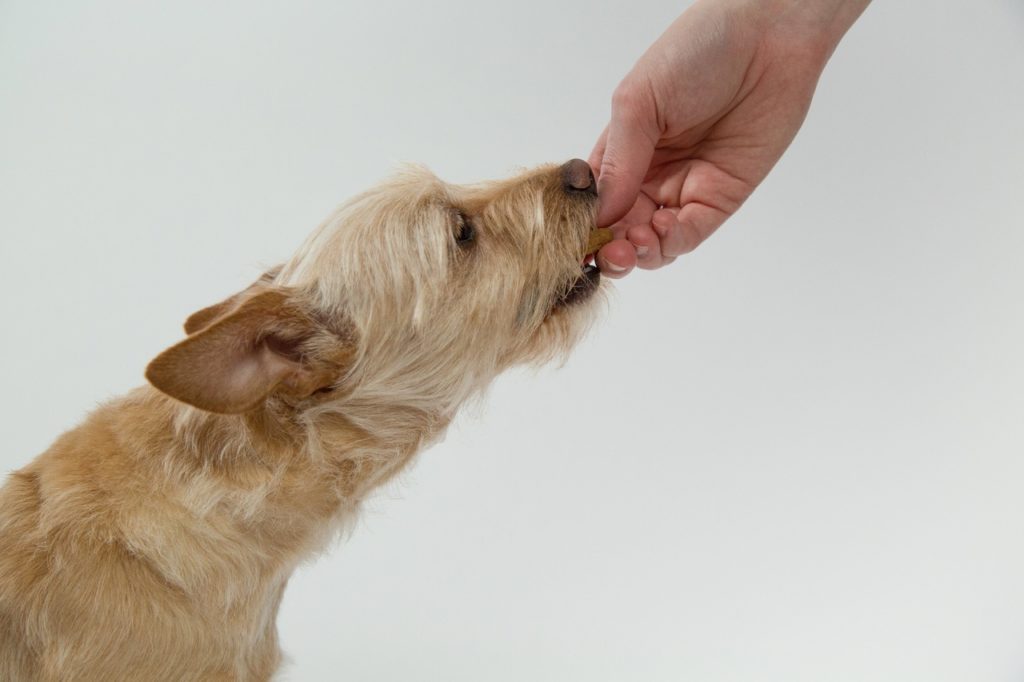Within the realm of veterinary care, the delicate balance of ensuring canine patients' safety under anesthesia is a critical consideration that requires meticulous attention.
While anesthesia is routinely utilized for various procedures, understanding the nuances of its safety, potential side effects, and the recovery process is paramount for pet owners and professionals alike.
By exploring the intricacies of dog anesthesia, from its tailored application to the management of post-anesthesia complications, a deeper insight into this crucial aspect of veterinary practice emerges.
The journey through the realm of dog anesthesia unveils a tapestry of considerations that underscore the importance of vigilance and expertise in safeguarding our furry companions' well-being.
Key Takeaways
- Anesthesia tailored to each dog's needs ensures safety and comfort during medical procedures.
- Monitoring and close attention minimize risks and complications associated with anesthesia.
- Post-anesthesia care includes monitoring for side effects, with some dogs needing overnight observation.
- Different types of anesthesia like general, local, and sedation are used based on the procedure and dog's health.
Importance of Tailored Anesthesia
Tailoring anesthesia to meet the specific needs of individual dogs is paramount in ensuring safe and effective medical procedures. Each dog's health status, age, breed, and overall condition must be carefully considered when determining the most appropriate anesthesia type and dosage.
Factors such as organ function, potential drug interactions, and any underlying health issues play a crucial role in this decision-making process. By customizing anesthesia to suit the unique requirements of each dog, veterinarians can minimize risks, enhance patient safety, and optimize the effectiveness of the procedure.
This personalized approach not only improves outcomes but also helps in managing any potential complications that may arise during or after the anesthesia administration.
Pre-Anesthesia Laboratory Testing
Before administering anesthesia to dogs, conducting pre-anesthesia laboratory testing is essential to assess organ function and overall health status accurately. These tests typically include:
- A complete blood count (CBC) to evaluate red and white blood cell counts
- Blood chemistry panel to assess organ function, electrolyte levels, and blood sugar
- Urinalysis to check kidney function and hydration status
Additionally, specific tests may be recommended based on the dog's age, breed, and medical history. By identifying any underlying health issues or abnormalities before anesthesia, veterinarians can make informed decisions, adjust anesthetic protocols if needed, and provide a safer experience for the dog during the procedure.
Risks and Monitoring During Anesthesia
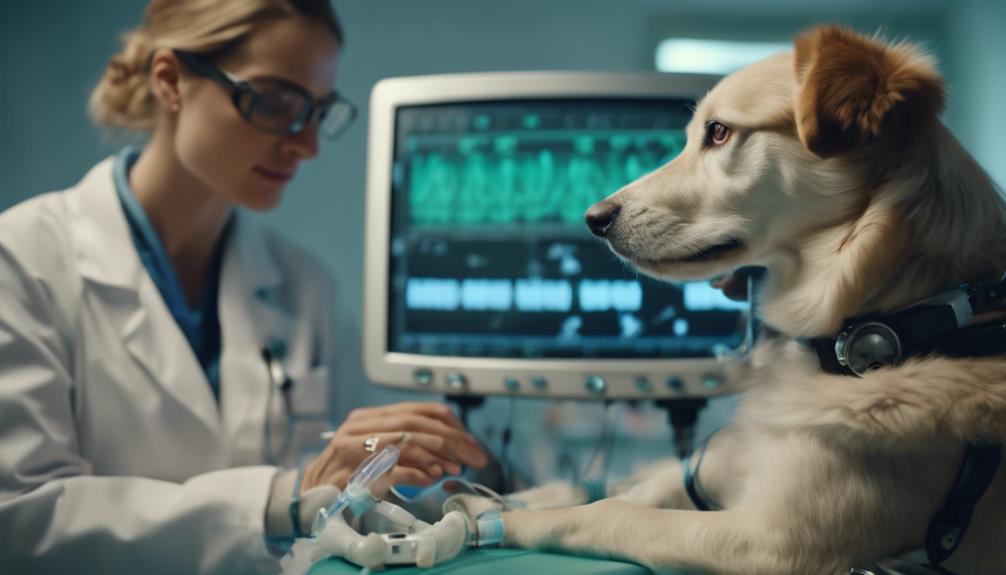
During anesthesia administration for dogs, vigilant monitoring and assessment of potential risks are crucial to ensure the safety and well-being of the patient throughout the procedure. Anesthesia for dogs carries inherent risks, including but not limited to aspiration, hypothermia, low blood pressure, low oxygen levels, abnormal heart rhythm, and rapid heart rate. These risks are heightened in dogs with preexisting health conditions such as kidney, liver, or heart disease.
Monitoring during anesthesia involves tracking vital signs like heart rate, blood pressure, oxygen saturation levels, and temperature. Continuous monitoring allows prompt detection of any deviations from normal parameters, enabling quick intervention to mitigate complications. Close observation and tailored care play a vital role in maintaining the dog's health and ensuring a successful anesthesia experience.
Complications and Mitigation Strategies
To ensure the safe administration of anesthesia for dogs, it is imperative to address potential complications that may arise and implement effective mitigation strategies. While complications are uncommon, being prepared is key to ensuring the well-being of the canine patient.
Mitigation strategies include:
- Thorough pre-anesthetic assessment to identify any underlying health issues.
- Continuous monitoring of vital signs during the procedure to detect and address any abnormalities promptly.
- Proper post-operative care and monitoring to manage any potential complications and ensure a smooth recovery process.
Anesthesia in Dogs With Health Issues
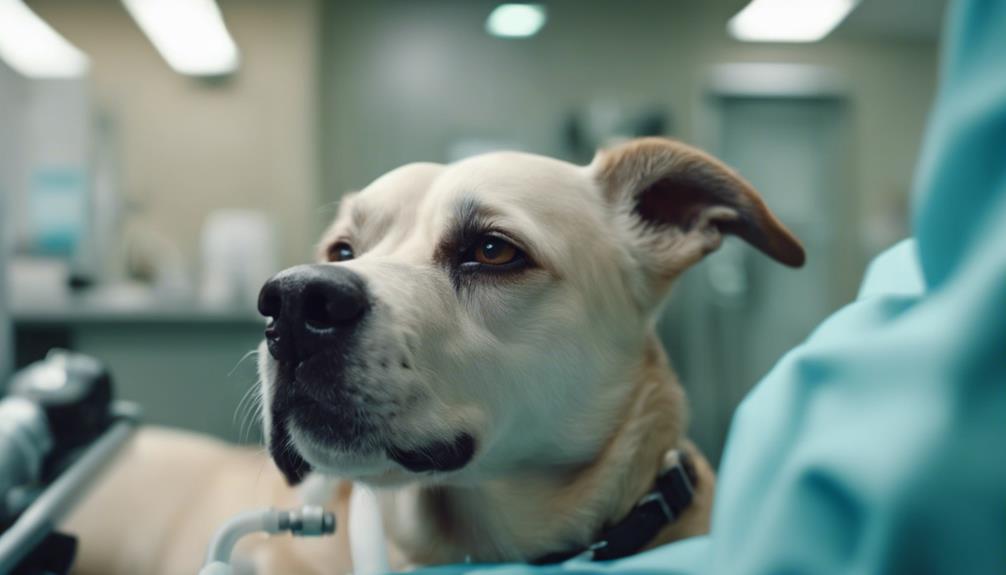
When administering anesthesia to dogs with underlying health issues, careful consideration and specialized protocols are essential to ensure safe and effective management of the anesthesia process. Dogs with health conditions such as kidney, liver, or heart disease require extra precautions due to the potential impact of anesthesia on their compromised systems.
Prior to anesthesia, thorough evaluation and pre-anesthetic testing are crucial to assess the dog's overall health status and determine the appropriate anesthesia plan. Adjustments in drug dosages, monitoring equipment, and post-operative care may be necessary to minimize risks and ensure a smooth recovery.
Close monitoring during anesthesia and the post-operative period is paramount to address any complications promptly and provide optimal care for dogs with health issues undergoing anesthesia.
General Vs. Local Anesthesia Use
Administering anesthesia to dogs involves a careful selection between general and local anesthesia depending on the nature of the procedure and the level of sedation required.
- General Anesthesia:
- Essential for procedures requiring sedation, pain relief, and muscle paralysis.
- Recommended for invasive procedures like dental extractions and surgeries.
- Ideal for spaying, neutering, and cruciate ligament repair surgeries.
General anesthesia provides a deeper level of sedation and muscle relaxation, making it suitable for more complex and invasive procedures. In contrast, local anesthesia targets specific areas, providing pain relief without affecting the dog's consciousness. The choice between these two types depends on the specific requirements of the medical intervention and the dog's overall health status.
Anesthesia for Dental Procedures
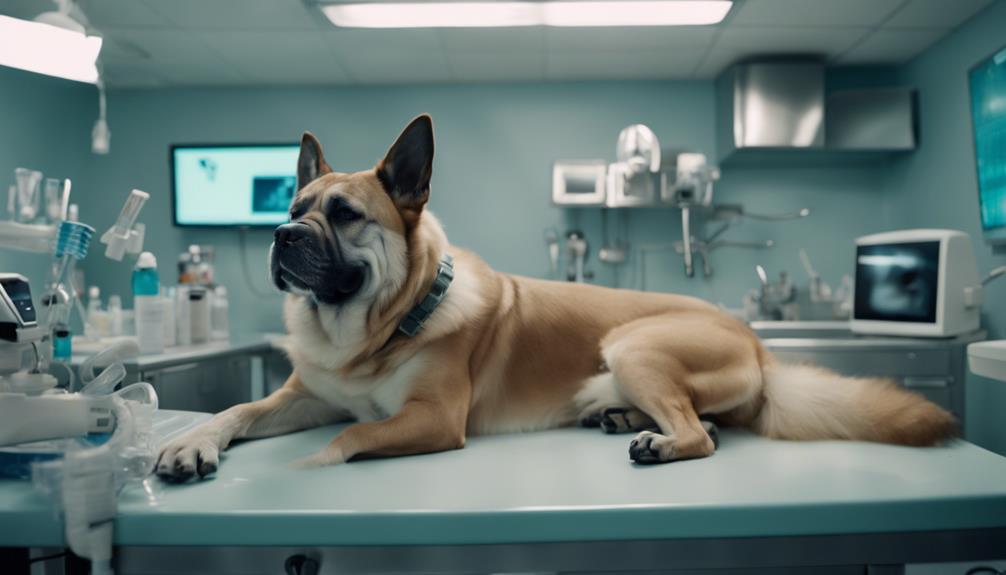
Dental procedures in dogs often require the careful administration of anesthesia to ensure proper sedation and pain relief during the intervention. Anesthesia for dental work in dogs is crucial to facilitate a calm and pain-free experience for the animal while allowing the veterinarian to perform necessary procedures effectively.
General anesthesia is commonly used for dental extractions, cleanings, and other invasive dental surgeries to ensure the dog remains still, pain-free, and unaware of the procedure. By tailoring the anesthesia to the specific needs of the dog and closely monitoring their vital signs throughout the dental intervention, veterinarians can ensure a safe and successful outcome for the dental procedure while prioritizing the dog's comfort and well-being.
Recovery Period and Healing
Following dental procedures requiring anesthesia, the focus shifts to the recovery period and healing process for dogs.
- Adequate rest is essential for proper healing and recovery.
- Monitoring for any signs of complications is crucial during this period.
- Gradual reintroduction of food and water should be supervised to prevent digestive issues.
During recovery, it is important to provide a comfortable and quiet environment for the dog to recuperate. Any prescribed medications should be administered as directed, and any concerns should be promptly addressed by contacting the veterinarian.
Post-Anesthesia Monitoring Needs
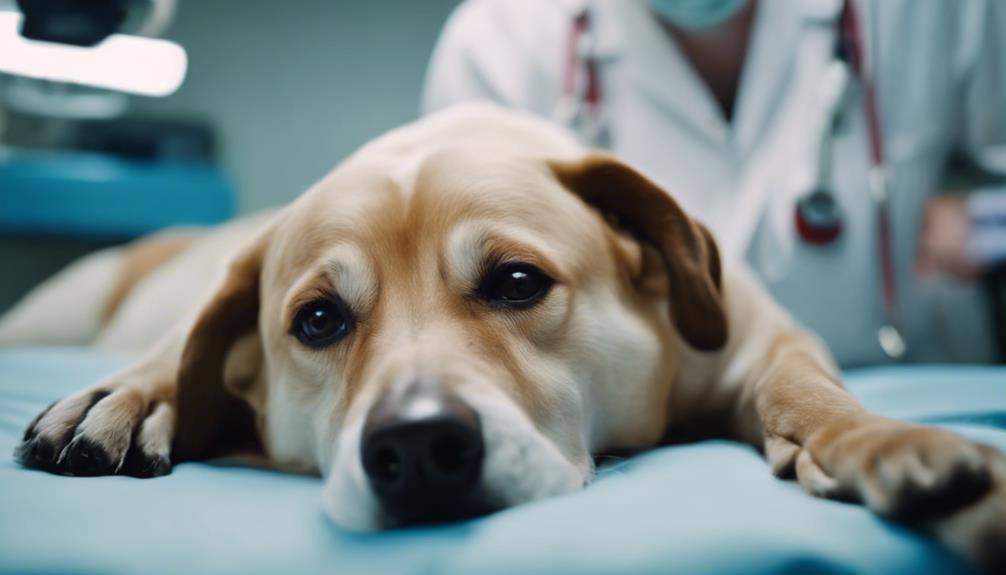
After undergoing anesthesia, vigilance in monitoring the dog's vital signs is imperative for ensuring a safe and smooth recovery process. This monitoring should include continuous assessment of heart rate, respiratory rate, temperature, and oxygen saturation. Close observation is crucial to promptly identify any signs of complications or distress post-anesthesia.
Monitoring equipment such as ECG machines, pulse oximeters, and thermometers can aid in tracking these vital parameters accurately. Additionally, physical checks for signs of abnormal behavior, pain, or discomfort should be conducted regularly.
Timely intervention in case of any abnormalities can help prevent potential post-anesthesia complications and ensure the dog's well-being during the recovery phase.
Oral Sedatives for Recovery
Administering oral sedatives post-anesthesia aids in the smooth recovery of dogs by helping manage anxiety and discomfort effectively. These sedatives play a crucial role in ensuring the well-being of the dog during the recovery phase. They can help alleviate any stress or unease the dog may experience after undergoing anesthesia, promoting a more comfortable healing process.
- Oral sedatives provide calming effects, reducing anxiety levels in dogs.
- They help minimize post-anesthesia discomfort, promoting a quicker recovery.
- Oral sedatives aid in ensuring the dog's overall well-being and facilitating a smooth transition back to normal activities.
Anesthesia for Spay and Neuter
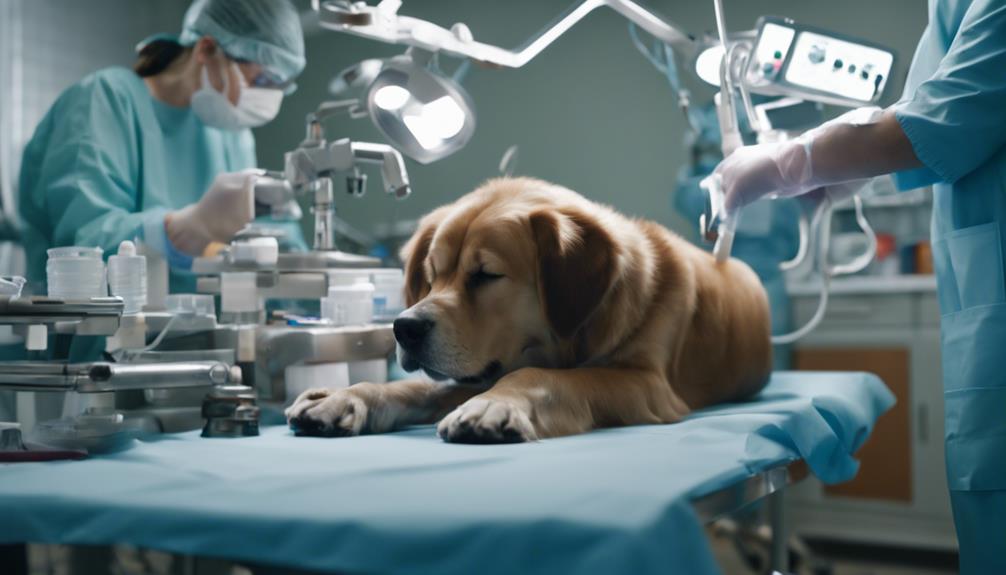
Anesthesia plays a crucial role in ensuring the safe and effective execution of spay and neuter procedures for dogs. Proper anesthesia selection and administration are vital to maintaining the well-being of the animal during these routine surgeries. Below is a table detailing the common types of anesthesia utilized for spaying and neutering procedures:
| Anesthesia Type | Description |
|---|---|
| General Anesthesia | Induces unconsciousness, pain relief, and muscle relaxation for the duration of the surgery. |
| Local Anesthesia | Numbs specific areas, providing pain relief without affecting consciousness. |
These anesthesia types are carefully chosen based on the specific needs of each dog undergoing a spay or neuter operation, ensuring their comfort and safety throughout the procedure.
Sedation for Diagnostic Procedures
Proper sedation plays a critical role in ensuring the comfort and calmness of dogs during diagnostic procedures, complementing the role of anesthesia in maintaining their well-being.
- Sedation helps to reduce anxiety and fear in dogs undergoing diagnostic tests.
- It allows for easier handling and positioning during procedures.
- Sedation aids in minimizing movement, ensuring accurate and reliable diagnostic results.
When appropriately administered by trained professionals, sedation can make the diagnostic process less stressful for dogs while facilitating the successful completion of necessary tests. This approach prioritizes the well-being and comfort of the animals, contributing to a more efficient and effective diagnostic evaluation.
Side Effects Post-Anesthesia

Following anesthesia in dogs, it is crucial to be aware of the potential side effects that may manifest post-procedure. Common side effects include whining or crying, disorientation, restlessness, and unusual behavior. While these effects are typically temporary, some dogs may require overnight monitoring for closer observation.
The recovery period after anesthesia can vary, with healing taking several days. In some cases, oral sedatives may be prescribed to aid in post-surgery healing or to alleviate anxiety. It is important for pet owners to closely monitor their dog's behavior and follow any post-anesthesia care instructions provided by the veterinarian to ensure a smooth recovery process.
Conclusion
In conclusion, tailored anesthesia in dogs is crucial for ensuring safe and effective medical procedures. Pre-anesthesia testing, careful monitoring, and mitigation strategies help minimize risks and complications during anesthesia. Special considerations must be made for dogs with underlying health issues.
Oral sedatives aid in the recovery process, while anesthesia is commonly used for spay and neuter procedures, as well as diagnostic tests. Understanding the importance, risks, and recovery process of dog anesthesia is essential for pet owners and veterinary professionals.


